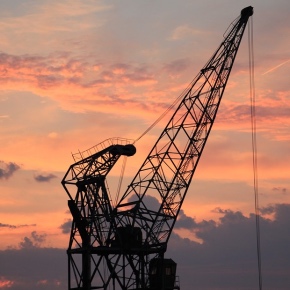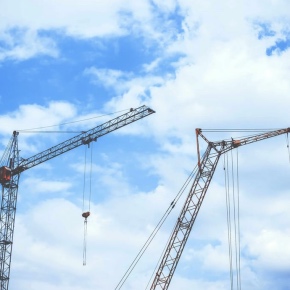
Essential Heavy Equipment for Construction Sites and Their Roles in Project Efficiency
Construction sites are active as retirement home recreation centres. Each project is a distinct unit that needs different types of heavy equipment to complete the various tasks efficiently, safely, and on time. So much so that a few of these become crucial for the success of the entire project from the beginning to the very end.
This article explores key pieces of construction equipment and their specific roles in enhancing efficiency and project workflow…
Excavators: The Foundation of Earthmoving
Excavators are probably the most recognizable heavy equipment in the construction industry. These machines have a long arm and a bucket attached to the end of the arm; they are necessary for digging, trenching, and transporting huge amounts of dirt or rubbish. Their flexible nature helps them work on many tasks from putting up the frame of buildings to removal of rubbish and thus helps the teams in clearing the sites for further construction activities.
Excavators in general do reduce manual hand labour and save time by automating the more strenuous parts of the site’s excavation process. They come in various sizes including as mini excavators for smaller areas enabling them to be used even in construction sites within urban areas and even smaller constructions.
Bulldozers: Powering Through Heavy Material
Bulldozers are rough machines made to push a huge volume of soil, sand, or rubble. Their power and their heavy duty blade make them very effective in site clearing and grading. Bulldozers level and compact the soil and the earth in bid to create a fine surface for further development.
In project time efficiency, bulldozers do the job of levelling the terrain and clearing obstacles fast enough at the initial stages of site development. They are well suited for rough terrains and can be fitted with attachments to perform specific jobs.
Dump Trucks: Streamlining Material Transportation
Material transport is necessary on every construction, and dump trucks facilitate that. Such trucks take away debris, soil, and other materials to be disposed of and transport gravel and sand.
There are various models of dump trucks according to load capacity and size, suitable for small, medium, and large projects. The dumping of materials is made easy with the hydraulic systems mounted, thus decreasing the idle time and increasing the overall workflow.
Motor Graders: Precision Grading and Smoothing
For road construction and site preparation motor graders are equipped with a long adjustable blade which is used for creating flat surfaces known as the grade. Every seasoned developer knows that they undertake detailed grading and sculpting and contouring and level surface areas to defined grades and slopes for effective drainage.
Motor graders can be relied upon to rectify the surface before applying the next layers such as asphalt and concrete to the surface. To diminish the risk of erosion and other defects to the surface during active construction, a lot of motor graders are used to form the dry surface layer of the projects.
Cranes: Lifting Heavy Loads with Precision
At times, construction sites may necessitate placing materials at a considerable height or at places that are not easily reachable. Cranes deliver the lifting capabilities required to position materials where they are needed, lifting steel beams for buildings, or concrete slabs.

There are different types of cranes which include tower cranes used for building skyscrapers and mobile cranes which can be easily moved for different applications. They form an integral structure within the multi-story construction, since it is able to enhance the safety of its workers by reducing the amount of manual lifting as well as the amount of manual labour required and features tools of precision control allowing faster and more accurate placement of materials during construction.
Forklifts: Speeding Up Material Handling and Safety
Forklifts are industrial trucks that are instrumental in materials handling on construction sites. As an example, hey are particularly effective when moving pallets, crates, and other materials over short distances due to their power and small size. Forklifts come in models with various lift capacities, with one such model being a reach truck forklift, which you can find at Alto Handling, perfect for stacking and lifting items to high places or environments.
Forklifts help in improving the timelines of the projects by reducing manual labour and thus improving the pace of the workflow and the chances of developing injuries. Forklifts are easy to use and can be adjusted to lift different loads types making them very effective on load congested sites.
Compactors: Ensuring a Solid Ground Foundation
So, in construction, whatever goes above has to be resting upon a solid ground that is unshaken over the years. Compactors perform this task by pushing down the layers of soil, gravel or asphalt to provide a strong footing for the buildings and roads. They are made in a number of ways, which include but are not limited to, vibratory rollers for larger areas and plate compactors for confined spaces.
Compactors perform the vital role of increasing the soil density which will in turn inhibit future problems such as soil erosion or the settling of the foundation, which helps reinforce the structure of any building. Proper compaction, however, renders the chances of any further maintenance to a minimum alleviating the need of time and resources in the future.
Skid Steer Loaders: Adaptable and Versatile for Various Tasks
Skid steer loaders are compact and highly nimble machines that shine in cramped quarters where larger machines simply can’t operate. They can be equipped with a variety of attachments including buckets, augers, and trenchers, which makes them well suited for minor digging, lifting and grading tasks.
Their versatility in this case is what makes skid steers a very helpful machine in case of projects where multitasking is a norm, for example for shifting materials, excavating. The attachment versatility allows a skid steer loader to accomplish several onsite functions, thus improving its utility value and versatility.
Trenchers: Efficiently Creating Trenches for Infrastructure
In projects requiring pipes, cables, or drainage systems, trenchers are used to dig precise trenches. They offer a quick and efficient alternative to manual trenching, making it easy to lay out the groundwork for essential infrastructure.
Trenchers are essential in reducing the time and labour needed for ground preparation. This efficiency is critical in large-scale projects where extensive trenching is required for utilities or water systems
Pavers: The Key to Smooth, Durable Roads
Pavers are used selectively in road construction to cover the surface with an exact and uniform layer of asphalt. This equipment provides asphalt consistency and active compaction and form to the laid mat, which aids in achieving the level necessary for roads and extensive pavements.
Pavers enhance the efficiency of the road construction process since they give a neat smooth finish without the need for excessive manual smoothing and compaction, thus completing the work in quick time. Their application enhances the general strength of roads leaving little need for repairs in the future.
The Impact of Equipment on Project Efficiency
Heavy equipment significantly contributes to project efficiency in the following ways:
1) Reduced Manual Labour: Machines like excavators and loaders can perform tasks in hours that would take days if done by hand. This efficiency reduces the manpower required, lowering labour costs.
2) Time Savings: With equipment designed for specific tasks, such as concrete mixers for construction and pavers for road work, construction teams can work faster and more efficiently.
3) Precision and Safety: Modern machinery often includes advanced controls and safety features that help ensure precise operation. GPS-enabled machines, for example, allow for exact grading, reducing rework and waste
Final Thoughts
Each piece of heavy equipment has a specific role in construction, from lifting and moving materials to grading, compacting, and trenching. Using the right machinery at the appropriate stage of construction enhances project efficiency and safety, ultimately leading to a successful and timely project completion.
Construction sites benefit immensely from specialised equipment like forklifts, which contribute to efficient material handling, speed up workflows, and reduce safety risks. Forklifts, cranes, excavators, and more work together to keep a construction site operating smoothly, and the right combination of these machines can ensure project success.
Latest news

3rd February 2025
Senior takes the lead on sustainability with new appointment
Senior Architectural Systems, the UK’s largest privately-owned manufacturer of aluminium windows, doors, and curtain walling, has appointed Luke Osborne to the newly created role of UK sustainability lead.
Posted in Aluminium Products, Architectural Ironmongery, Articles, Building Industry News, Building Products & Structures, Building Regulations & Accreditations, Building Systems, Doors, Recruitment, Restoration & Refurbishment, Retrofit & Renovation, Sustainability & Energy Efficiency, Windows
3rd February 2025
Gilberts: The Fine Detail of Special Needs Support
The ‘outstanding’ Highfurlong School is demonstrating its excellence via the attention to detail in its new extension – even the Gilberts ventilation has been chosen to support specific pupil needs.
Posted in Air Conditioning, Articles, Building Industry News, Building Products & Structures, Building Services, Case Studies, Facility Management & Building Services, Heating, Ventilation and Air Conditioning - HVAC, Posts, Restoration & Refurbishment, Retrofit & Renovation
3rd February 2025
C-TEC launches fire alarm mains isolator key switches range
Leading life-safety systems manufacturer C-TEC has launched an innovative range of ultra-safe fire alarm mains isolator key switches.
Posted in Articles, Building Industry News, Building Products & Structures, Building Services, Facility Management & Building Services, Health & Safety, Innovations & New Products, Retrofit & Renovation, Security and Fire Protection, Videos
3rd February 2025
GEZE: The Benefits of Automatic Revolving Doors - a Modern Solution for Today's Architecture
Andy Iredale, National Sales Manager (Automatics) at GEZE UK, discusses the benefits of installing an automatic revolving door in a building…
Posted in Access Control & Door Entry Systems, Architectural Ironmongery, Articles, Building Industry News, Building Products & Structures, Building Services, Canopies, Entrances & Column Casings, Doors, Facility Management & Building Services, Health & Safety, Innovations & New Products, Restoration & Refurbishment, Retrofit & Renovation, Security and Fire Protection, Sustainability & Energy Efficiency
 Sign up:
Sign up: